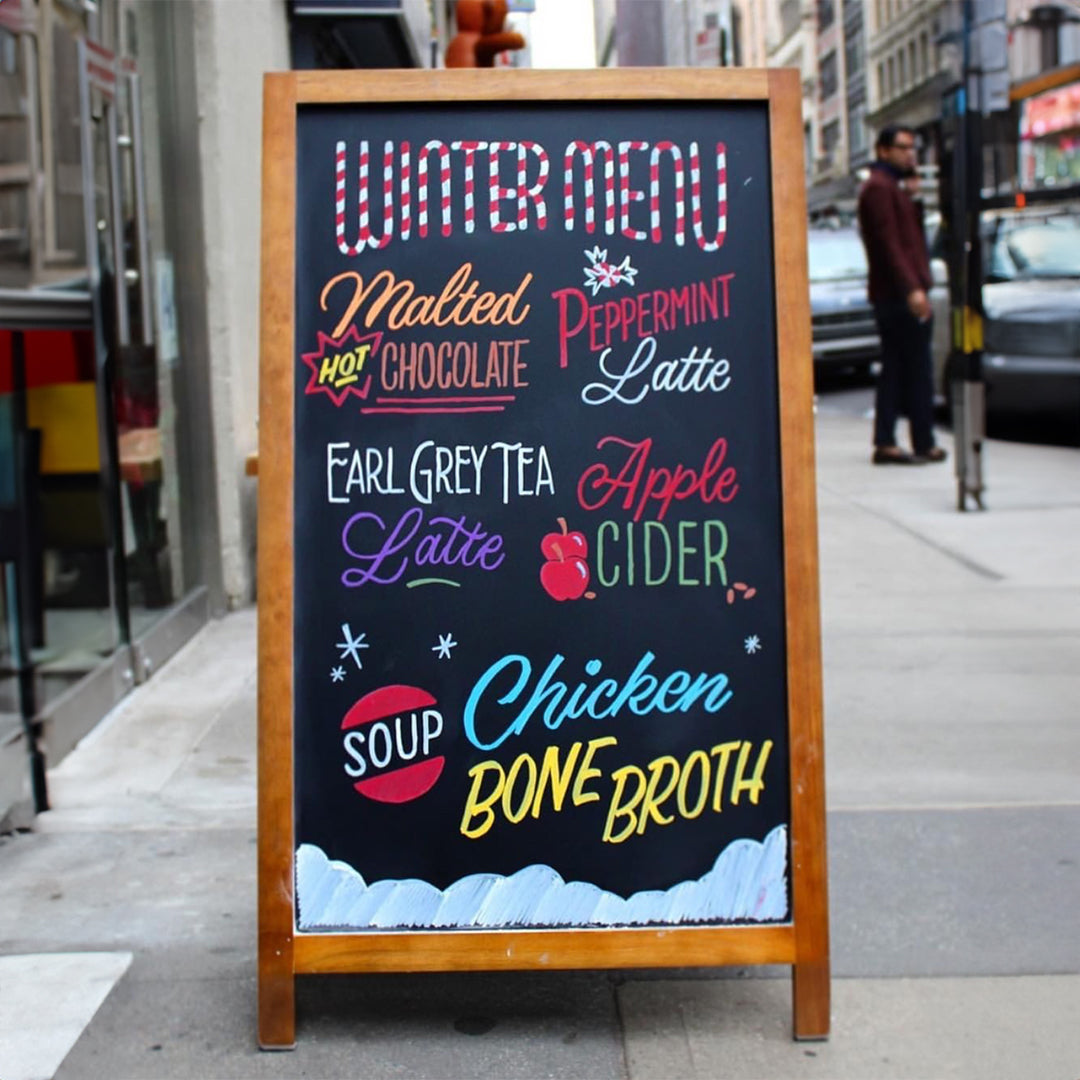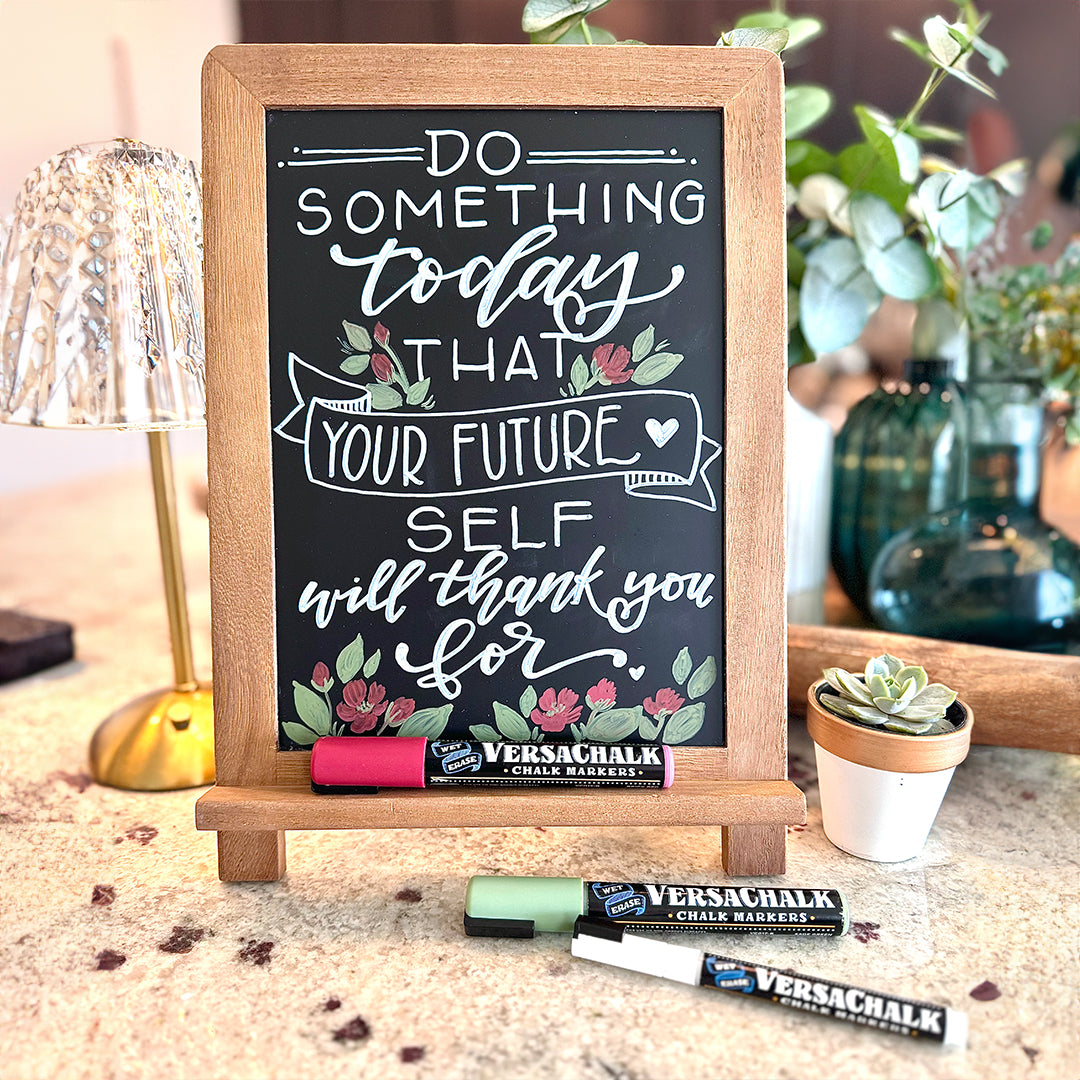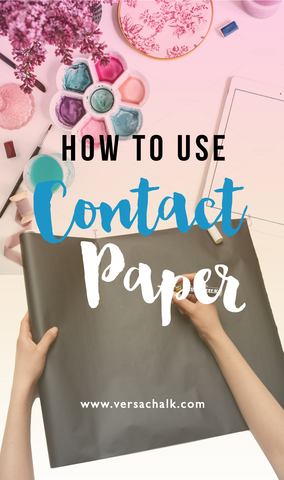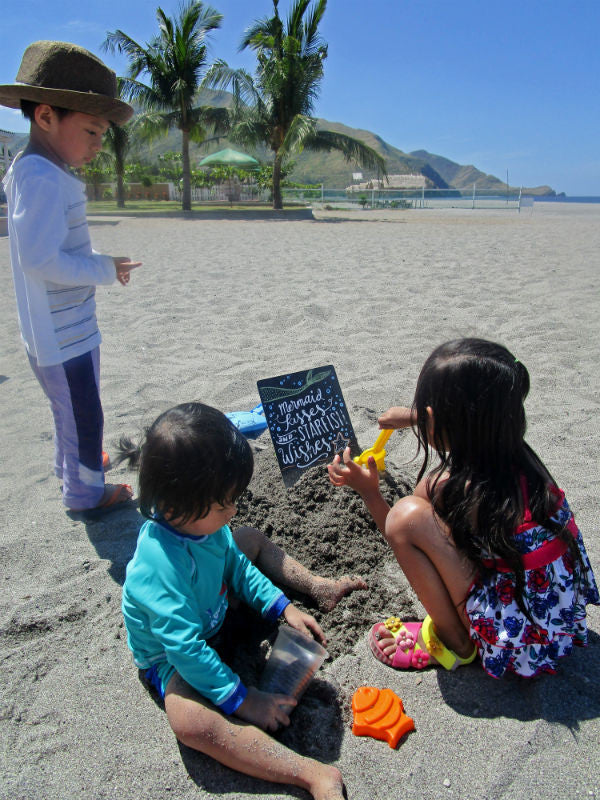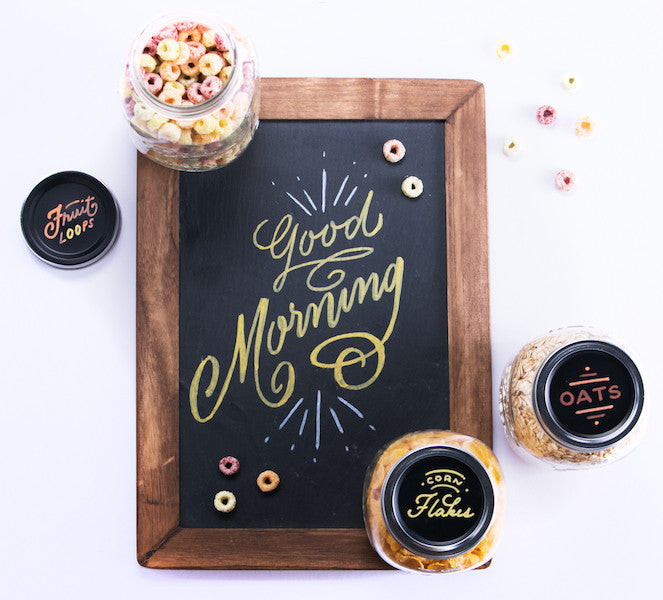
The Chalkboard: Everybody’s Favorite Canvas
Black, green or white, the traditional scribbling board has come a long way

The vintage-look modern slate chalkboard: works with regular chalk and liquid chalk markers
Have you ever wondered what students in classrooms used before there were chalkboards and paper? Cave walls and hands, perhaps? Not so long ago, they wrote on small slabs of wood covered with black grit, called ‘slates.’ These were cumbersome, however, because teachers had to go from student to student to check their work and could present their lessons to only one person at a time.
This is a true story of what happened in a world without readily available chalkboards: In 1846, teacher Olive Mann Isbell (niece of the famed American educator Horace Mann) was faced with the impossible task of teaching the alphabet to students who had neither slates nor paper. The woman responsible for opening the first school in California had to write on what was readily available: the backs of her students’ hands! She knew there had to be a better way of conveying information for the whole class to read.

James Pillans, inventor of the chalkboard
Source
Mr. Chalkboard
Enter James Pillans, the headmaster of Old Royal High School in Edinburgh, Scotland, the recognized inventor of the chalkboard and colored chalk. He used both to teach geography. He envisioned a writing board encompassing an entire wall, covering the wall with gray or black slate stone and using chalk to write on it. His formula for colored chalk consisted of ground chalk, color dyes and porridge. Before landing on the idea of one huge board, Pillans had placed all of his students’ reading tablets on the classroom wall, much like the display of flat screens we see in Best Buy’s TV department.
Although most of them credit Pillans with the invention of the large chalkboard, historians disagree on exactly when the slate board was first invented. Some say it was in 1801, asserted by some as the date of the earliest recorded use of slates in the USA by George Baron, a West Point teacher. Others say it was 1823, when Samuel Read Hall—who opened the first "normal school" in Concord, Vermont—patented a design for a blackboard.
What do eggs and potatoes have in common with the chalkboard?
As early as 1815, Scots referred to this writing canvas as the "blackboard," because it was made of dark gray or black slate stone. Other countries adopted the name. The term "chalkboard" started appearing in the USA in the mid-1930s. David A. Fryxell of Family Tree magazine claims that early ones were made from “pine covered with a mixture of egg white and carbon from charred potatoes.” Some classroom walls had “a paste of lime, plaster of Paris and lampblack” spread on them.

When is black not black? When it turns green.
According to 1898 mineral industry statistics, slate blackboard manufacturing began in the US in the 1840s. Over time, improved railroad networks allowed for distribution of the boards throughout the country. Boards with a porcelain composition were lighter and easier to ship. Green-colored chalkboards, however, were not introduced until the 1960s. Many teachers preferred them to black ones, because they didn’t show old chalk lines as much (what is now called "ghosting") and were more durable than slate. Also, the green background causes less eye strain.

The chalkboard easel—a favorite of dining establishments
From indoors to outdoors to basically everywhere
The chalkboard has come a long away from the green and black wooden schoolroom canvas. Each phase of its development was directly linked to a specific purpose—the easel style, for example. It’s not just for artists, but for small businesses announcing product lines on sidewalks, dining establishments seeting up a storefront menu, and even multi-board contraptions that act as dividers and visual exhibits.
 Neon liquid chalk markers—give your masterpiece a glow
Neon liquid chalk markers—give your masterpiece a glow
Even that traditional wooden frame and backing of chalkboards was improved upon over time. Steel chalkboards appeared in the 1960s. Chalkboard paint has endured into the 21st century, and can be found on many surfaces, increasing the versatility of its writing partner, chalk. With the advent of the washable liquid chalk marker, the chalkboard’s status was elevated yet again. Regular, dusty chalk has given way to its dustless, odorless and non-toxic modern cousin. Of course, there is still much debate over the relative merits of liquid chalk and the traditional, powdered kind—whether used on chalkboard, whiteboard, or surfaces like glass and porcelain—but the choice usually comes down to personal preference. The latest improvement on Pillan’s original chalk is the new neon chalk marker, which gives an added glow to artwork.
Currently, chalkboards come in various formats:
- Frameless chalkboard
- Magnetic board
- Dry-erase marker board
- Whiteboard
- Smart board
- Think board
- Chalkboard vinyl sheet
The last one—as with its transparent equivalent, the think board—is flexible, thin and soft, so it can be cut and molded into various shapes and sizes. It comes with an adhesive backing, so it can be attached to most smooth surfaces.

Both regular chalk and liquid chalk markers work well with chalkboard vinyl sheets
Did you know that whiteboards nearly replaced chalkboards?
Over time, the school chalkboard found its way into boardrooms, laboratories, other medical facilities ... anywhere ideas are presented. You would think that with the advent of the Internet, though, chalkboards would go the way of the T-Rex. Surprisingly, despite the invention of the whiteboard in the 1980s and its adoption by 21% of all American schools in the mid-1990s, the chalkboard lives on! Most universities in the USA still use them. Why is this so, when the competitor is lighter and easier to clean, with a dry-erase constitution that eliminates the need for water to erase the surface? Why do advanced learning institutions still prefer chalkboards? Part of the answer lies in the durability of chalkboards—many whiteboards need to be replaced after a couple of years. But whiteboard expert Hanson Grant adds that the continuing presence of chalkboards is more about practicality: “It costs about $20,000 to replace an existing sliding [chalkboard] system with whiteboards.”
The changing face of the chalkboard
Who says chalkboards have to be flat? Chalkboards are not confined to walls anymore. They come in various shapes and sizes. Connect several boards with hinges to produce a room divider. Restaurants can use them to enclose an impromptu outdoor patio. Taller versions can act as a fence. Use them as a perimeter to set off your property from the pavement, or separate your garden from the neighbor’s. A chalkboard wall decorated with neon liquid chalk markers would make your front or backyard the talk of the neighborhood ... especially if you change your illustrations every week.
The chalkboard calendar: can be an actual chalkboard or chalkboard contact paper/vinyl sheets
Paint it black!
Your entire coffee mug can be a chalkboard. How? Coat it with chalkboard paint! In fact, with this paint, you can turn almost any surface into a chalkboard. IMPORTANT! For best results with chalk markers, chalkboard paint should only be applied to non-porous walls and other surfaces.

Plants, pots and chalk: an unlikely partnership that works
Source
Vinyl doesn’t just mean your parents’ records
Chalkboard paint is fun, but chalkboard contact paper and chalkboard vinyl sheets provide the ideal surface for liquid chalk markers. Splash a massive chalkboard calendar across your home office wall. Place a bulletin board in your condotel lobby. Have your coffee break conversations around a chalkboard message center instead of the water cooler. Turn your floor or ceiling into a canvas for family members or colleagues to showcase their art.
The vinyl sheet has given the chalkboard a level of versatility it has never had before. Its softness and pliability ensures it can be cut into whatever shape you need. Vinyl chalkboard sheets can be made into coasters, coffee stencils, wine glass trinkets, bottle tags, table signs, labels for plant pots, jars and other containers, or to turn furniture and architectural features (dressers, window panes) into creative canvases.
The chalkboard of the future
If you think about it, the prototype for today’s Android tablet and iPad was the 1846 slate board. In a strange case of life imitating art, science fiction writers accurately predicted technological advances such as flat screens, electronic billboards and interactive smart boards by drawing inspiration from the lowly chalkboard. If you have seen Total Recall (or similar movies), you might have noticed the animated screens adorning skyscraper walls and floating in train stations, along with electronic transparent "newspapers" and Skype-like interfaces popping up when future moms want to check up on their teenagers. The chalkboards of the future will help pave the way for these high-tech goodies to become realities, along with many other wonders not yet imagined!

The smart board: the high-tech cousin of the chalkboard
Source
Even now, images projected onto present-day interactive smart boards can be manipulated with fingers. Only a few years ago, the very idea of resizing a floating image with your hands was just a pipe dream—as envisioned in the Tom Cruise movie, Minority Report.
Time will tell whether the chalkboard will still exist 100 years from now. Thanks to its original purpose of conveying knowledge to the masses, however, it will always be regarded not just as a "medium of instruction," but also a vehicle of expression of creativity.


